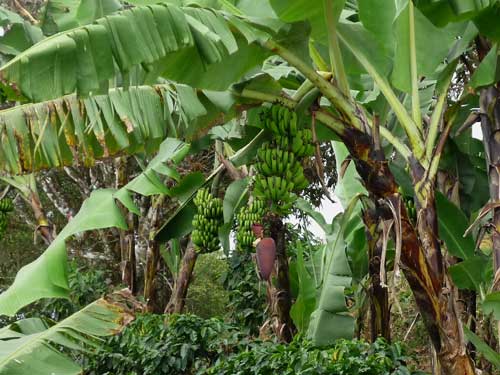11
Sep
Fungicide Residues Found in Pregnant Women Living Near Banana Plantations
(Beyond Pesticides, September 11, 2014) A study of pregnant women living near or working in Costa Rican banana fields shows disturbing levels of the fungicidal component ethylene thiourea (ETU) in the urine samples collected from the women tested. In 72 percent of the 445 women tested, researchers found ETU in urine at levels five times greater than that of the general population. The levels detected in the urine exceed reference doses ””the numbers set by regulatory agencies, like the U.S. Environmental Protection Agency (EPA), that reflect the maximum acceptable oral dose of a toxic substance.
detected in the urine exceed reference doses ””the numbers set by regulatory agencies, like the U.S. Environmental Protection Agency (EPA), that reflect the maximum acceptable oral dose of a toxic substance.
Scientists conducting the study, Aerial Application of Mancozeb and Urinary Ethylene Thiourea (ETU) Concentrations among Pregnant Women in Costa Rica: The Infants’ Environmental Health Study (ISA), focused on ethylene thiourea because it is the main metabolite of the active ingredient found in Mancozeb, a fungicide used in agriculture, professional turf management, and horticulture. The fungicide’s prominent uses on food and feed crops include tree fruits, such as bananas, apples, and pears.
It is not just the presence and levels found within the urine that is troubling. Researchers also discovered that pregnant women who live within 48 meters of banana plantation have on average 45% more urinary ETU compared with women who live greater than or equal to 565 meters away. Washing agricultural work clothes and working in agriculture during pregnancy also resulted in increased ETU levels.
Conclusions from the study point to aerial application and pesticide drift as the primary factor causing the exposure and elevated levels. As the lead scientist, Berna van Wendel, PhD, a professor with the National University’s Central American Institute for Studies on Toxic Substances, noted to The Tico Times, “Few women work in the agricultural sector, which led us to believe that this is a problem for the wider environment.”
Dr. Van Wendel also pointed to ways to reduce exposure, noting,“The weather is hot and their homes are built to let the air in. It’s not easy to avoid contact with these chemicals so we suggested reducing the amount of chemicals at the source.” Other recommendations included establishing more protective laws and standards, like much larger buffer zones, rather than just adhering to the insufficient existing standards.
Why worry about bananas in the U.S.?
Pesticide drift and contamination in and around agricultural communities is a serious problem everywhere, no matter what the crop. Past reports and studies conducted in the U.S., including one by the National Institute for Occupational Safety and Health (NIOSH), have raised serious concerns surrounding agricultural community exposure to pesticides. Of particular concern are children, pregnant women, and other sensitive populations.
Pesticide drift is typically the result of small spray droplets and volatilized chemicals being carried off-site by air movement. The main weather factors that cause drift are wind, humidity and temperature changes. Aside from poisoning people and animals, drift can injure foliage, shoots, flowers and fruits resulting in reduced yields, economic loss and illegal residues on exposed crops.
Beyond Pesticides has long advocated that people support a healthy work environment for farmworkers and surrounding communities by choosing organic food, advocating for stronger farmworker protection standards, and more protective laws. For more information on supporting organic for farmworkers and rural residents, as well as for the your family’s health and the environment, see Beyond Pesticides’ Eating with a Conscience web guide.
Source: The Tico Times
All unattributed positions and opinions in this piece are those of Beyond Pesticides.











Pesticide drift is very important when considering the true scope of application impact. The effects of pesticides extend far beyond the boundaries of crops because of air pollution. It is important that increased research is encouraged by the academic community. Information is further needed to be shared with the general public to create change.
November 18th, 2014 at 3:59 pm